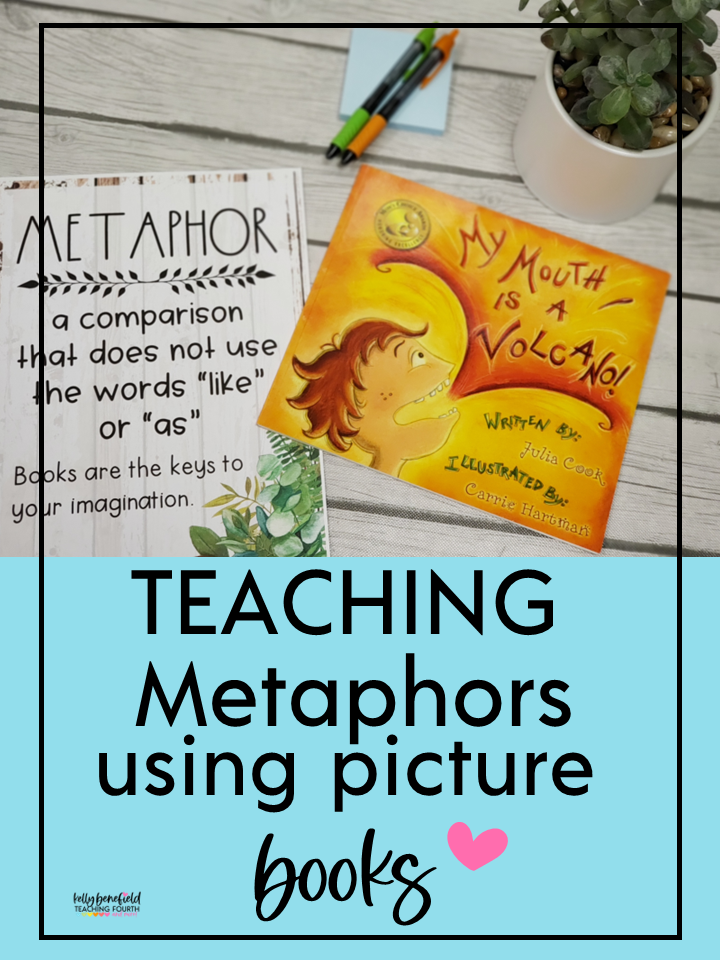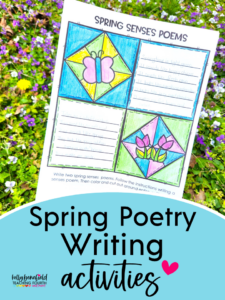
Ideas for Using Picture Books for Teaching Metaphors
I love teaching reading, and one of my favorite things to teach is figurative language. Not only do I enjoy teaching students to find and identify different types of figurative language, I love discovering and sharing beautiful figurative language from children’s books. Picture books can be a great way to share and discuss figurative language with your students.
Here are some of my favorite ideas for picture books for teaching metaphors in my upper elementary classroom.

Picture Books for Teaching Metaphors: My Mouth is a Volcano

With this terrific book, the metaphor is right in the title. This book lends itself to great discussions about this metaphor. Also, since My Mouth is a Volcano is a great first day read-aloud, simply pull it back off the shelf when you are ready to teach metaphors. No need to reread the entire book. Save time by simply focusing on the metaphors during your second read.
Picture Books for Teaching Metaphors Barn Savers

I love the descriptive language in this simple picture book that describes a boy’s day helping his father work to salvage a barn.
Barn Savers features a wonderful metaphor in the very first sentence of the book. Not only does this make this book a wonderful book for teaching metaphors, but it would also be a great book for teaching creative ways to use figurative language as a grabber lead for narratives. Descriptive adjectives, alliteration, and similes also fill the pages of this great book.
Picture Books for Teaching Metaphors: The Lonely Scarecrow

Not only is The Lonely Scarecrow just a sweet story to share with your students, but it is also chocked full of figurative language. There are several wonderful metaphors to discuss with your students or to chart and use as mentor metaphor sentences. Students love this sweet story. This book is also great for discussing themes.
Teaching Metaphors with Owl Moon

Many great reading and writing lessons can be taught using this classic picture book, and teaching metaphors is definitely one great way to use Owl Moon. Some metaphors include: “I was a shadow as we walked home.” and “The mood made his face into a silver mask.” The metaphors and figurative language like the story and illustrations in this book are simply beautiful.
Teaching Metaphors with Hello, Harvest Moon

It is difficult to find a picture book with more than just a couple of metaphors, but the author of Hello, Harvest Moon has filled this book with several beautiful metaphors for you and your students to relish and discuss.
This poetic book beautifully captures the essence of a moonlit night. It is great for teaching poetic language and visual imagery. There are so many lessons that can be pulled from these magical pages! The possibilities are endless!
Picture Books for Teaching Metaphors: Saturdays and Teacakes

I saved my personal favorite (from this list) for last! If you are not familiar with Saturdays and Teacakes, then this is a must to add to your library. I love how the author recalls memories of simple Saturdays that he spent with his grandmother.
In Saturdays and Teacakes, the author uses beautiful descriptive language, personification, similes, onomatopoeia, and of course rich metaphors to draw the reader into this sweet narrative. You and your students will love this book.
Figurative Language Posters
Having a classroom reference of figurative language definitions and examples can be very helpful to your students. This beautiful set of figurative language posters makes a great reference to use when teaching not only metaphors, but similes, personification, idioms, and more! They make a perfect addition to your reading classroom. Find them HERE.
Using picture books to find and discuss meanings of metaphors is a great way to introduce, review, and encourage students to begin writing their own metaphors. Once you begin sharing metaphors, your students will probably surprise you with metaphors that they discover in their own independent reading.
Have a blessed day and happy reading!











